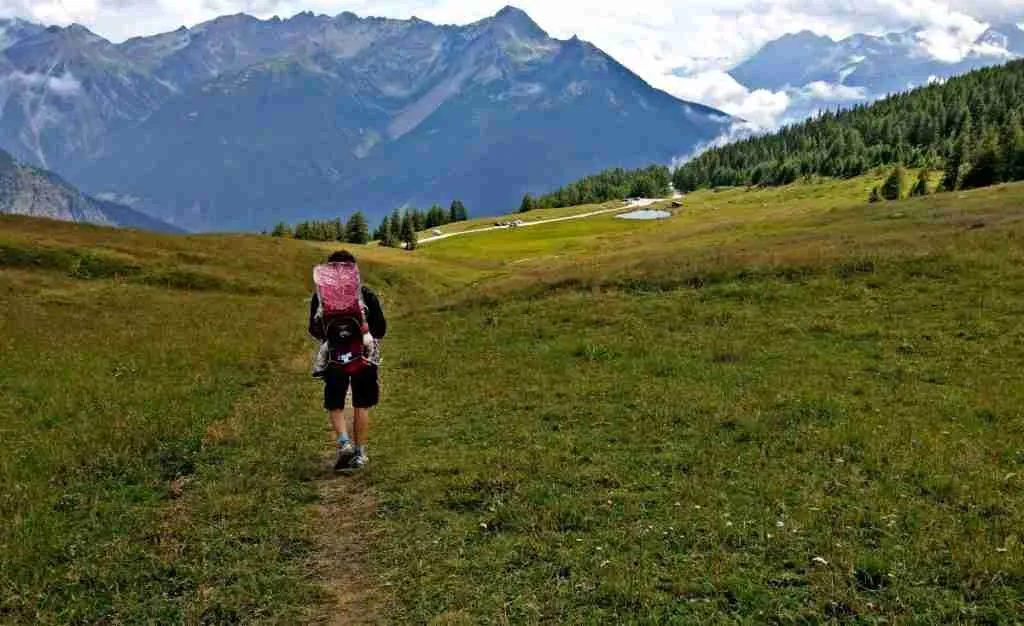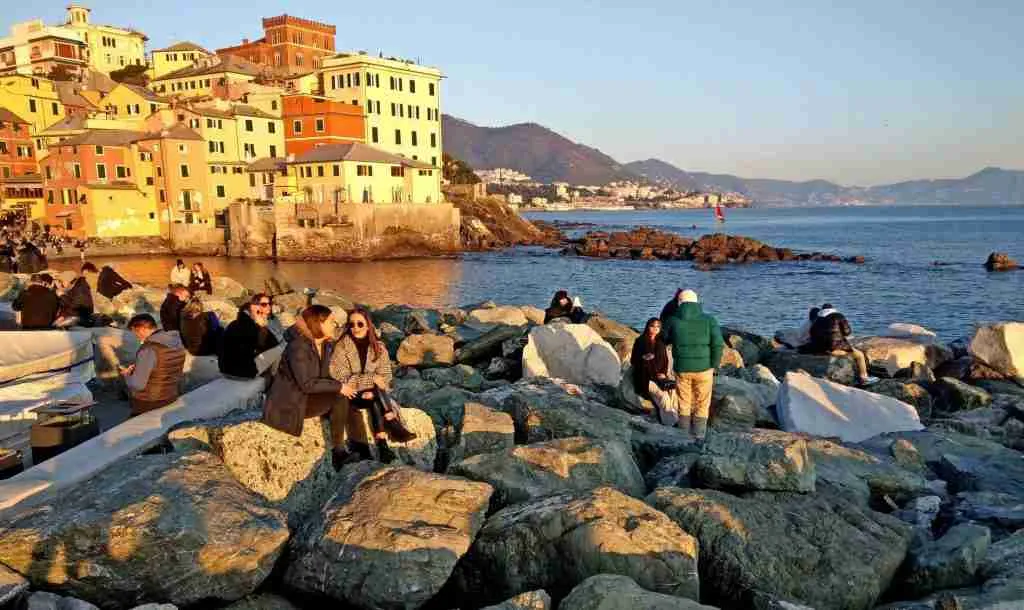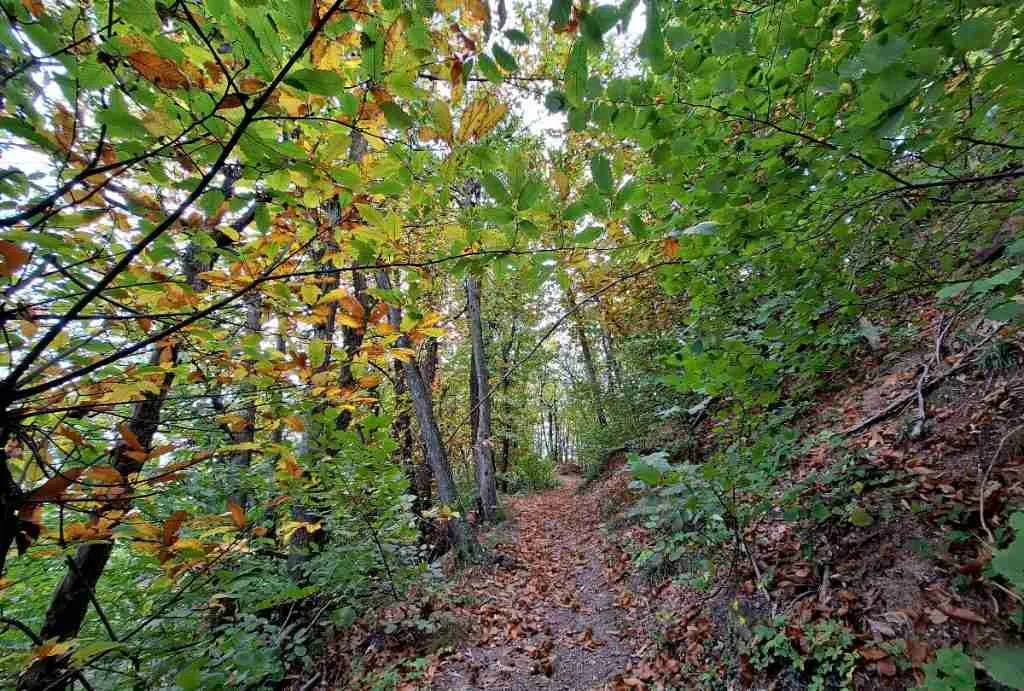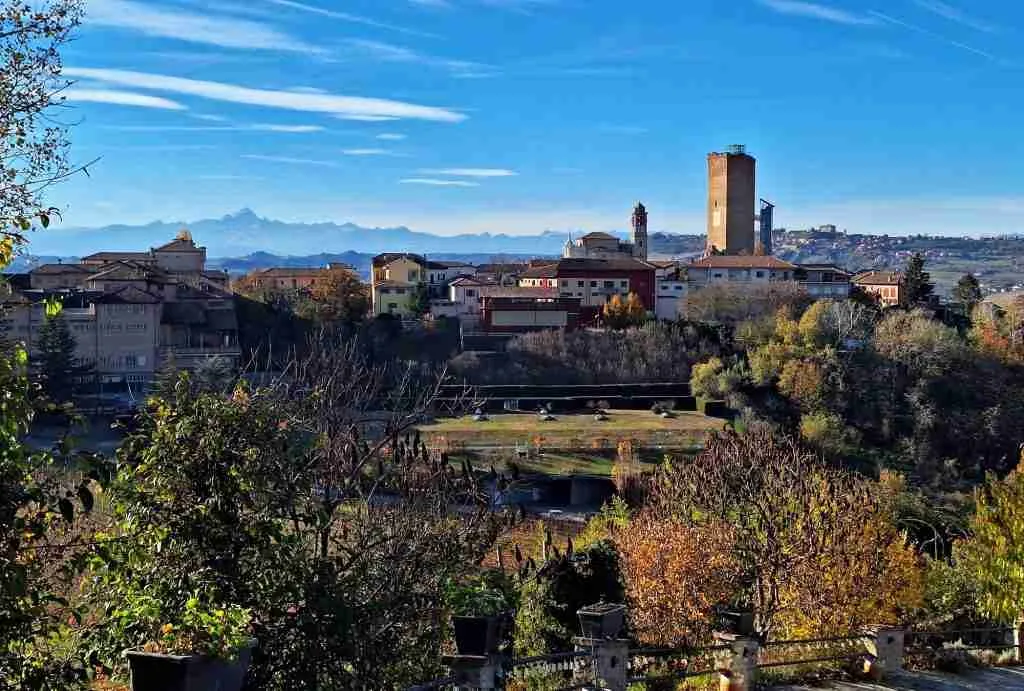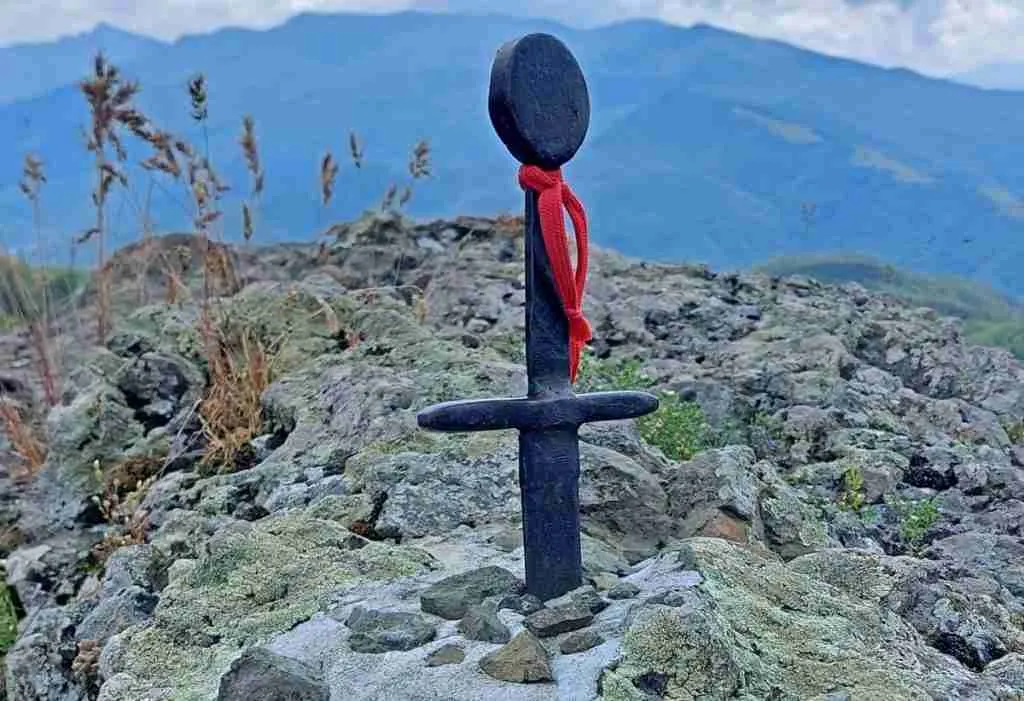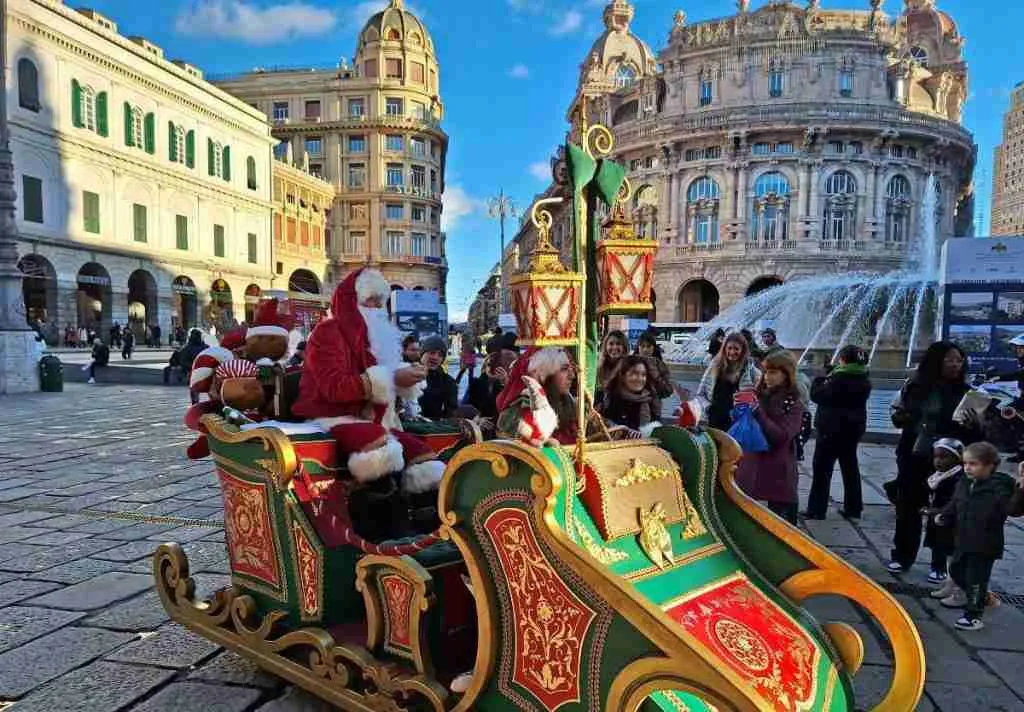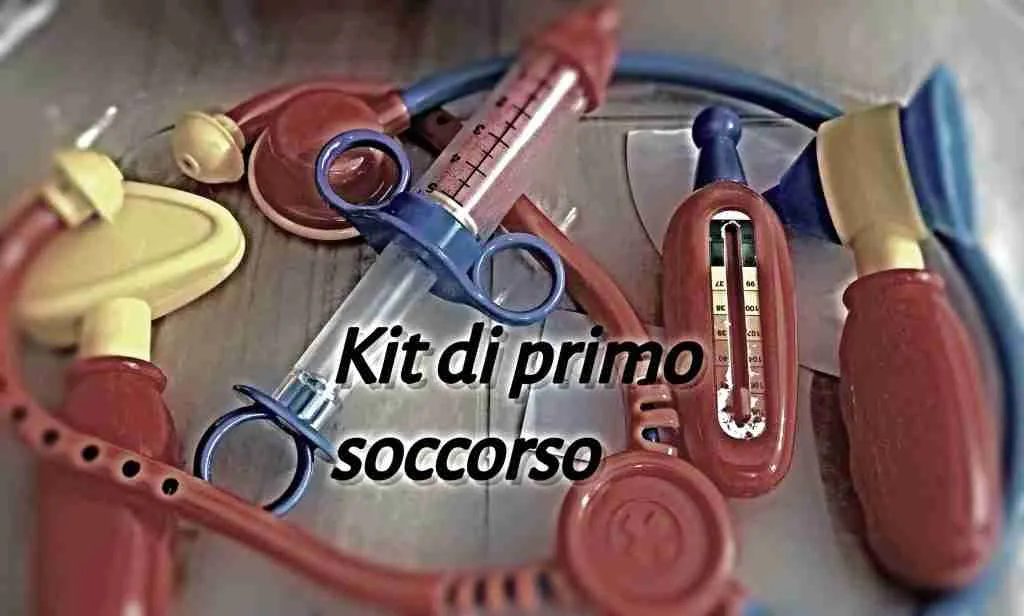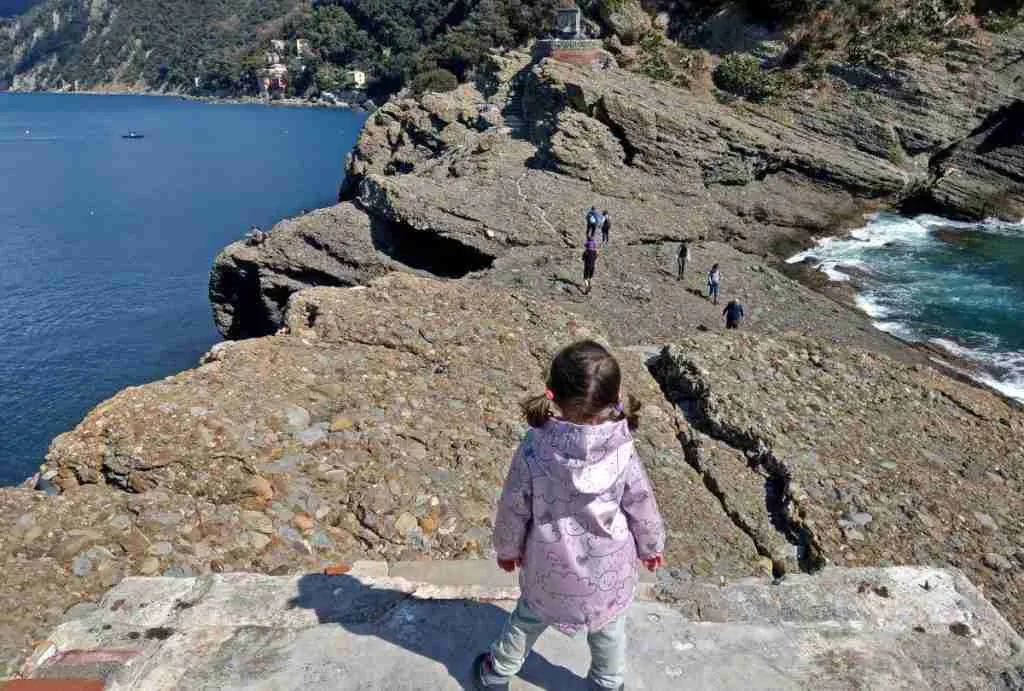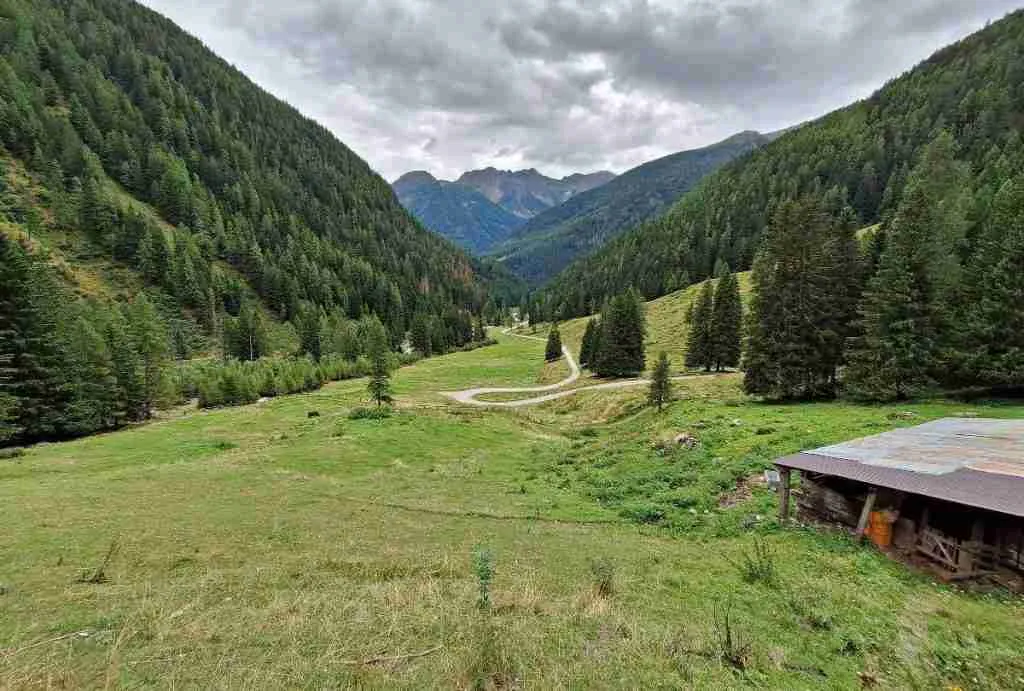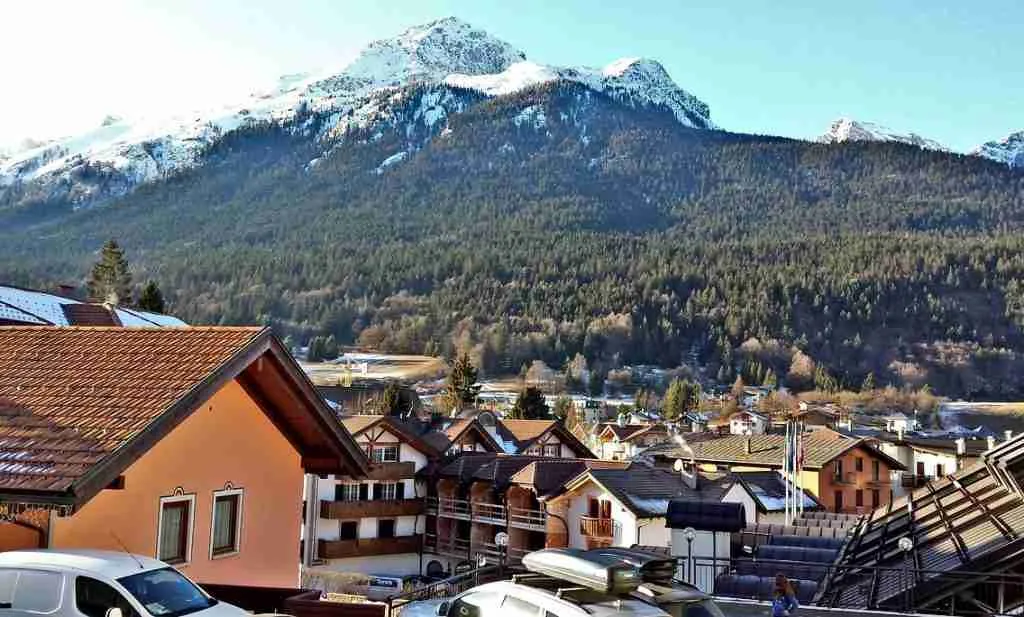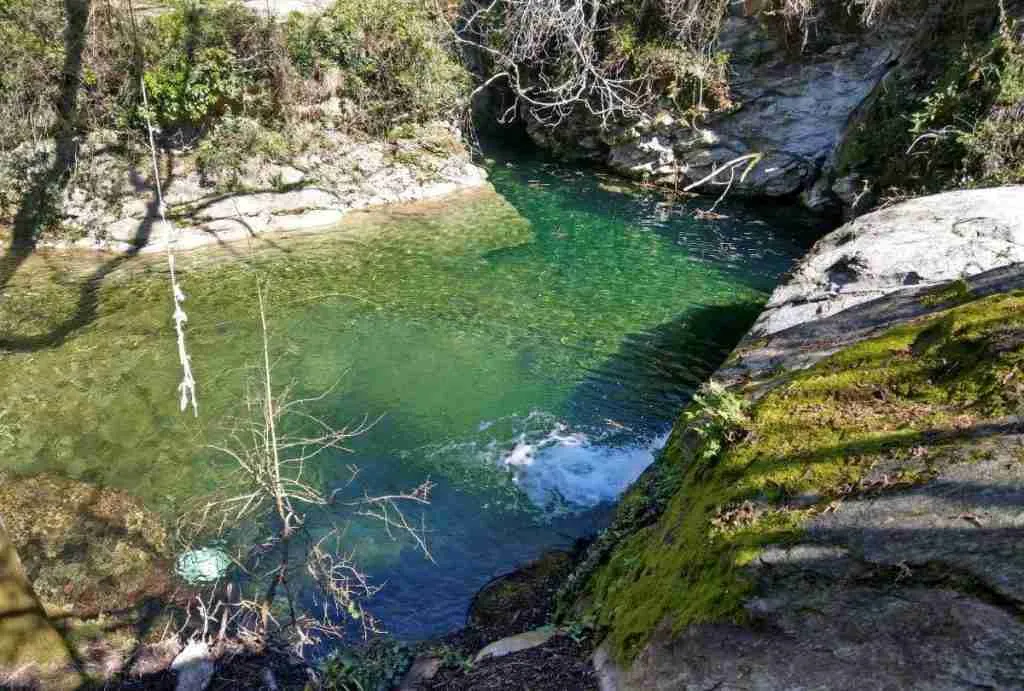The Bernina Red Train, a UNESCO World Heritage Site since 2008, connects Italy to Switzerland via 55 tunnels and 196 bridges.
The railway tracks it runs on are the highest in Europe and the steepest in the world.
For this reason, the Bernina Red Train, also called the Trenino Rosso (Red Train ) because of the colour of its carriages, is a unique railway line.
Along the way, you can admire breathtaking views and, if you wish, you can get off and go hiking or visit the villages.
In this article, you will find the complete guide – where it starts, route, when to go etc – to organise your experience on the Bernina Red Train.
Where the Bernina Red Train departs and arrives
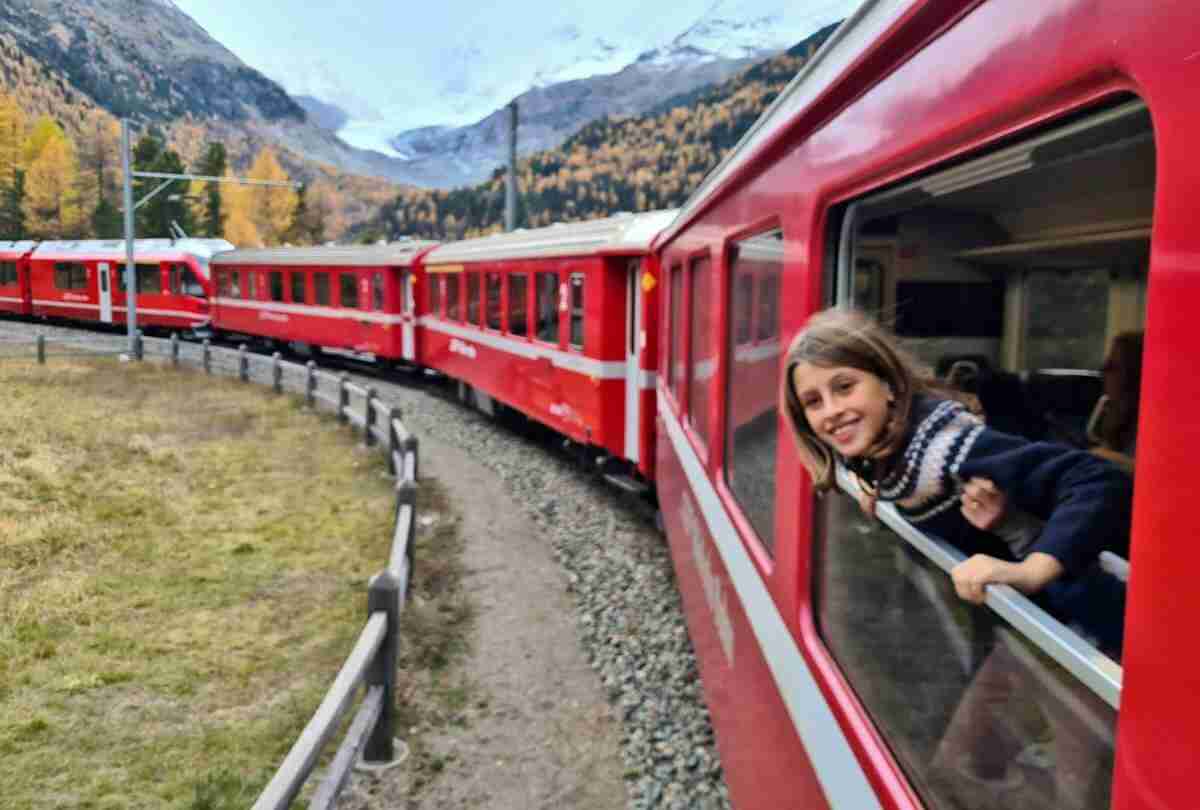
The Bernina Red Train departs in Italy from Tirano station, in the province of Sondrio, and arrives in Switzerland in St. Moritz, covering 60 kilometres in 2h30 minutes.
The starting altitude is 429 metres and, in just 22 kilometres, the train reaches its maximum altitude at the Bernina Pass (2,253 metres above sea level), then descends to 1,775 metres in St. Moritz to finish the journey.
Along the route, which winds its way through truly impressive landscapes, the Bernina train makes 9 stops (10, counting the final one in St. Moritz).
Bernina Red Train: stops along the way
To fully immerse yourself in the experience, in addition to admiring the panorama from the window, it is advisable to get off at the various stops to explore the landscape.
What stops does the Bernina train make
Tirano
Tirano is the starting point of the little train from Italy and has a small, quaint old town with several small shops.
Brusio – Circular Viaduct

The helical viaduct in Brusio is certainly one of the most scenic points of the route.
To best appreciate the passage of the little train as it passes over the viaduct, it is necessary to descend and admire it from the ground.
Le Prese
You can get off at this stop if the idea is to go round Lake Poschiavo. The mostly flat walk is 8 kilometres long and takes about an hour and a half.
Near the Le Prese stop, there are picnic areas equipped with tables, barbecues, a fountain and toilets.
In autumn, there is also an ice-skating rink.
Poschiavo
Poschiavo is the main town of Valposchiavo. It is a quaint little village that hosts Christmas markets in winter.
Cavaglia
A walk of about ten minutes takes you to the so-called Marmitte dei Giganti, which are open between March and October.
These are rock formations (15 in total) carved out by the continuous passage of water.
Admission is free (if you wish, you can also visit with a guided tour) and, by running a little, you can see them in the hour between the passage of one little train and the next.

Alp Grüm
Alp Grüm is one of the most popular stops because of the enchanting panorama one can admire: from the Cavaglia plain to the Palu glacier and the Bergamo Alps.
Near the station, there is a restaurant and a guesthouse.
Bernina Red Train: route and prices. Bernina Hospice
At an altitude of 2,253 metres, the Ospizio Bernina is the highest station on the entire route.
It offers an impressive view of the mountains and Lake Bianco.
Diavolezza and Lagalb
From both stops, the surrounding peaks can be reached by ski lifts.
Once you reach 3,000 metres, you can go hiking in summer or skiing in winter.
In addition, you can eat or sleep at the Berghaus Diavolezza mountain hut, which also offers a panoramic whirlpool, a restaurant and a laundry service.
It is possible to stay overnight in a dormitory or private room, with half board.
The location is truly breathtaking! – Book here.
Morteratsch
An easy walk of about an hour (the difference in altitude is about 100 metres) takes you to the blue-coloured Morteratsch glacier.
The path is wide, also suitable for pushchairs, and feasible even in winter as the trail is made of beaten snow.
Near the station, there is a nice playground for children.
Pontresina
Pontresina is a very pretty village as well as the gateway to the Roseg Valley, where you can enjoy beautiful walks or rides in horse-drawn carriages .
Below, you can read the timetable and prices of the carriage rides.

St. Moritz
St. Moritz is the last stop on the route. It is a mountain resort, located 1,800 metres above sea level, modern and famous for its luxury shops and four- and five-star hotels.
Between the station and the town centre, there is a large lake around which you can stroll and walk when it freezes over in winter.
Which and how many stops to make
Before planning your experience on the Bernina train, it may be useful to know that it runs at a frequency of one train per hour, which means that at each stop you will have to stop for at least an hour before you can catch the next train.
If the idea is to go and come back in the same day, thus having the time counted, the advice is to choose 2 stops, 3 at most, that arouse more interest and concentrate on those.
We can therefore say that the choice of the type of stops to make depends on the time one has available, the season in which one decides to go, and above all one’s interest (hiking, skiing, etc.).
When to go on the Bernina train: best time of year
Here again, the question of which is the best season to go on the Bernina train cannot be answered, because it depends on what you want to do.
Certainly, summer and autumn are the ideal seasons for walking and in autumn also for admiring the foliage.
In winter everything is white, you can ski , but the possibilities for hiking are limited.
Personally, I would recommend summer and autumn, but this is a recommendation dictated solely by my personal taste.

Bernina train: which train to choose?
We talk generically about the Bernina train, but in reality, you have three options to make the journey between Tirano and St. Moritz. Let’s see what they are.
Regional train – The regional train ticket is the cheapest (64 CHF return).
You can board and alight at all stops without limit and seats cannot be reserved.
The windows can be rolled down.
Regional train with panorama car riages – In this case, the carriages are panoramic but the windows cannot be lowered.
The train is the same as the previous one, but if you want to travel in the panorama carriages, you have to pay a supplement of 5 CHF per ticket.
It may be useful to know that your seat is reserved , but if you get off at the stops, your reservation is lost.
Bernina Express – This is the fully scenic train that only makes a few stops. Seats must be booked in advance and the windows cannot be lowered.
The supplement for the Bernina Express varies from 20 CHF per ticket for the winter season to 26 CHF per ticket for the summer season.
Bernina Red Train: route and prices
Tickets that do not require a reservation can be purchased directly at the station in Tirano.
In this case, however, it is advisable to arrive at least half an hour earlier.
If there are no more seats , you will have to wait for the next train.
For the other types, the advice is to book well in advance because seats sell out quickly.
You can view all types on the official website.
Ticket prices
A regional train ticket costs 32 CHF (one way) or 64 CHF (return) if you travel second class; 56 CHF one way if you travel first class.
It may be useful to know that it is also possible to buy a ticket for shorter distances, without necessarily having to travel all the way to St. Moritz.
Children up to the age of five do not pay, while children between the ages of six and 15 pay half price.
Every first Sunday of the month, there is the possibility of a family ticket for 29 CHF.
The family ticket is valid if the family consists of one adult and one child or two adults and two children up to the age of 15.
Timetable of the Bernina Red Train
The train runs 365 days a year, in all weathers.
Always check the updated timetables on the website.
Basically, however, the first train of the day leaves Tirano at 07:41 (from St. Moritz at 10:11) and the last one at 19:00 (from St. Moritz at 16:48) with a frequency of about one train per hour.
Travel information for the Bernina Railway
To travel on the Bernina Red Train, between Italy and Switzerland, you must have a valid identity card for foreign travel.
On Swiss territory, most establishments accept euros but often give change in francs.
Bancomat and credit cards are accepted without problems.
On the regional train, you can bring your bicycle and leave it in a special carriage.
In my opinion, there is no better side to sit on as you can admire the scenery from the large windows moving here and there without any problems.
The only point on the route where it is perhaps advisable to sit on the left side of the train (going towards St. Moritz), is at the Bernina Hospice, so that you are on the best side to admire the glacier in all its beauty.
Bernina train: where to stay in Tirano
B&B Antica Residenza Centro Storico – Rustic style rooms, double and family communicating rooms, also with disabled access.
Excellent breakfast included and proximity to the departure station of the Trenino (10 minutes on foot).
Possibility of leaving your car in the private garage at the price of €7.00 per day or in the numerous free and paid public car parks located within walking distance of the hotel – Book here.
Where to stay in St. Moritz
Soldanella – A traditional, somewhat retro-style hotel located in St. Moritz, a 5-minute walk from the shopping street.
It offers a restaurant, a Turkish bath, a games room, and a generous breakfast buffet (included in the room price) – Book here.
Where to park in Tirano
In Tirano, you can leave your car or motorbike in the free car park in Via Calcagno. It is behind the departure station of the Bernina Red Train, and a pedestrian subway leads directly to the entrance.
Continue reading:

